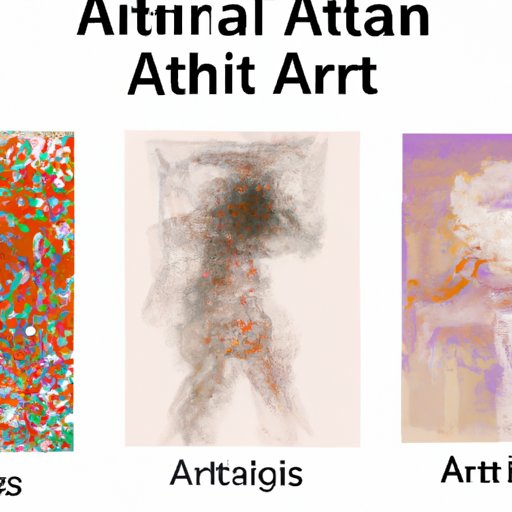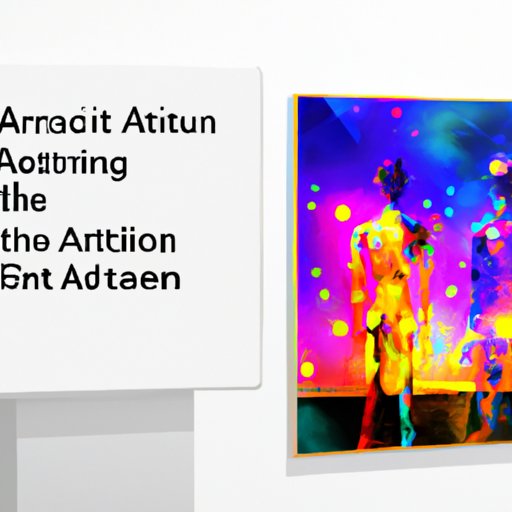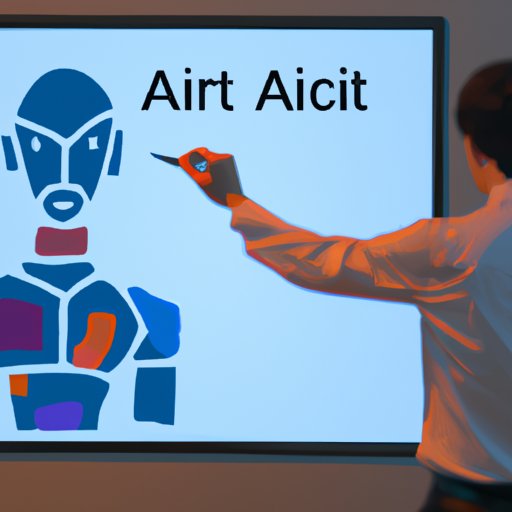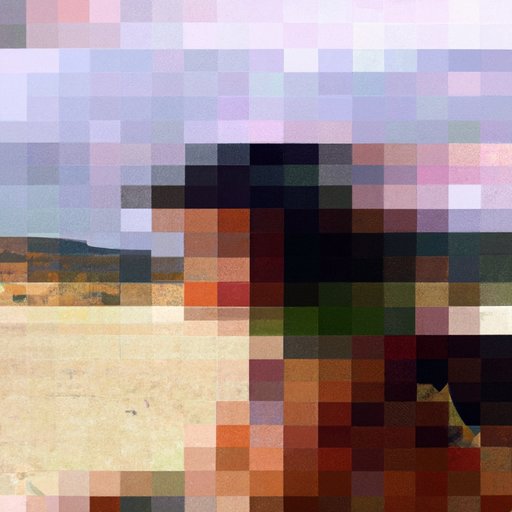Introduction
Artificial intelligence (AI) has rapidly become one of the most powerful tools in today’s society, revolutionizing industries and transforming our daily lives. One area that has seen a recent surge in AI applications is the art world. AI artwork, or machine-generated art, is becoming increasingly popular as artists explore the creative potential of this technology. But what exactly is AI artwork? How does it work? This article will provide an in-depth exploration of AI artwork, from the different types of AI art to the process of generating it and the ethical implications. It will also look at the impact of AI artwork on the art world and what the future may hold.

Exploring the Different Types of AI Art
There are several different types of AI art, each of which uses unique techniques to generate artwork. The most common types of AI art are neural network-based art, generative adversarial network (GAN)-based art, and evolutionary art. Let’s take a closer look at each type of AI art.
Neural Network-Based Art
Neural networks are computer systems modeled after the human brain and nervous system. They are composed of layers of interconnected nodes that allow them to learn and recognize patterns. Neural networks can be used to generate artwork by using pre-existing images as training data. The neural network then “learns” from this data and generates new artwork based on its understanding of the training data. As researcher Mario Klingemann states, “The machine is not creating something from nothing, but rather recombining elements from existing datasets and forming them into new configurations.”
Generative Adversarial Network-Based Art
Generative adversarial networks, or GANs, are a type of deep learning algorithm that uses two neural networks to generate new images. The first network is a generator that creates images, while the second network is a discriminator that evaluates the generated images and determines whether they are “real” or “fake.” The generator and discriminator compete against each other in a game of “cat and mouse,” with the goal of the generator producing images that fool the discriminator. This type of AI art is often used to generate realistic images, such as faces and landscapes.
Evolutionary Art
Evolutionary art is another type of AI art that uses evolutionary algorithms to generate artwork. These algorithms use concepts from natural selection, such as reproduction, mutation, and selection, to generate artwork. The algorithm begins by randomly generating a population of images; these images are then evaluated based on certain criteria, such as color or composition, and the “fittest” images are selected for reproduction. This process continues until the desired image is generated.
The Process of Generating AI Art
The process of generating AI art begins with collecting training data. This training data is typically a set of images or videos that have been labeled according to certain criteria, such as color or composition. These images are then used to create a neural network, which is then trained on the data. Once the network is trained, it can be used to generate new artwork based on its understanding of the training data.
The next step is to create a neural network. This can be done using either a supervised or unsupervised learning approach. Supervised learning involves providing the neural network with labeled data, such as images that have been labeled as “red” or “blue.” Unsupervised learning involves providing the neural network with unlabeled data and allowing the network to “learn” from the data without any guidance. Once the neural network is created, it is trained using the training data.
Once the neural network is trained, it can be used to generate new artwork. This is done by feeding the network with new data and allowing it to generate new images based on its understanding of the training data. The results can range from abstract images to realistic images, depending on the type of neural network being used.
Examining the Role of Machine Learning in AI Art
Machine learning is an essential component of AI artwork. Machine learning algorithms are used to train neural networks, allowing them to recognize patterns in the data and generate new images. There are several different types of machine learning algorithms, including decision trees, random forests, and support vector machines. Each of these algorithms uses different techniques to analyze data and generate predictions.
In addition to training neural networks, machine learning algorithms can also be used to generate artwork. For example, GANs use a combination of supervised and unsupervised machine learning algorithms to generate images. Evolutionary algorithms also use machine learning techniques to evaluate images and select the “fittest” ones for reproduction.

Investigating the Impact of AI Art on the Art World
AI artwork is having a major impact on the art world. AI artwork is often more affordable than traditional artwork, making it accessible to a wider audience. It also allows artists to create artwork quickly and easily, enabling them to experiment with different styles and techniques. However, some people have expressed concern about the potential implications of AI artwork, particularly with regard to copyright issues.
Despite these concerns, AI artwork has been met with enthusiasm by many in the art world. Artists are exploring the creative potential of this technology, while art collectors are recognizing the value of AI artwork. In fact, AI artwork has sold for hundreds of thousands of dollars at auction, demonstrating its growing popularity and acceptance in the art world.
Exploring the Intersection of Art and Technology Through AI Art
AI artwork is an exciting intersection of art and technology. It allows us to explore the creative potential of AI and examine how it can be used to create art. At the same time, it raises important questions about the ethical implications of AI artwork, such as who owns the copyright to machine-generated art and who should be credited for its creation.
AI artwork also provides an opportunity to examine the relationship between humans and machines. As researcher Richard Newcombe states, “We’re entering a period where we’re starting to see a collaboration between humans and machines, and AI art is a really interesting way to explore that relationship.” By examining how AI artwork is created and appreciated, we can gain insight into the potential of this technology and the impact it may have on the art world.

Analyzing the Future of AI Artwork
It is clear that AI artwork is here to stay, and its popularity is only likely to grow in the years ahead. AI artwork is becoming increasingly sophisticated, with artists exploring more complex techniques and technologies. At the same time, machine learning algorithms are becoming more powerful and efficient, allowing AI artwork to be generated faster and with greater accuracy.
The possibilities of AI artwork are almost limitless. In the future, AI artwork could be used to generate entire virtual worlds or even create interactive experiences. It could also be used to create artwork on a massive scale, with AI-generated images replacing photographs and paintings as the primary medium of expression.
Conclusion
AI artwork is an exciting and rapidly evolving field that is transforming the art world. From neural networks to generative adversarial networks, there are a variety of techniques and technologies being used to generate artwork. AI artwork is also having a major impact on the art world, from providing more affordable artwork to raising important ethical questions. Finally, AI artwork provides an opportunity to explore the creative potential of this technology, as well as the relationship between humans and machines. As AI artwork continues to evolve, it will be fascinating to see what the future holds.
(Note: Is this article not meeting your expectations? Do you have knowledge or insights to share? Unlock new opportunities and expand your reach by joining our authors team. Click Registration to join us and share your expertise with our readers.)
